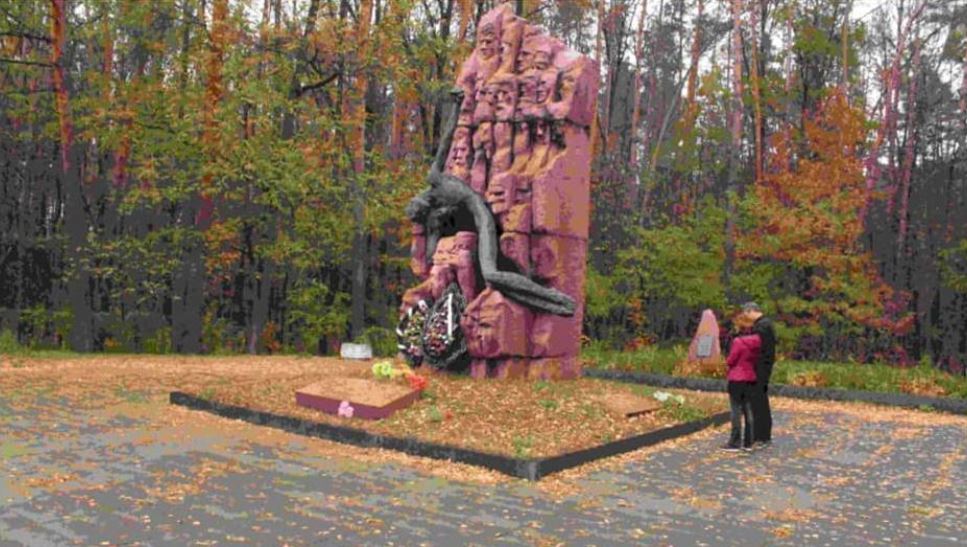“A tragedy of guilty victims”? The memory of the Roma genocide in postwar Ukraine, part 1
Despite the fact that an inclusive memory of the victims of the Nazi regime is being formed in Ukraine, why does the Roma genocide remain on the sidelines? To a significant degree, this is a consequence of the perception and depiction of Roma in Soviet culture, as well as of the politics of memory about the war. This article investigates the process of forming knowledge and ideas about the Roma victims of the German occupation in the postwar USSR, with a particular emphasis on Soviet Ukraine, and examines various materials which were the source of the Soviet audience’s mass perceptions about the occupation and Roma representation. The first part of the article examines the “underwater part of the iceberg”: documents of the Extraordinary State Commission (NDK), which was already gathering information during the war about civilian losses, and analyzes the methods of how the killings of the Roma were recorded. Although the NDK’s documentation remained inaccessible for decades, it nonetheless determined the tonality, framework, and viewpoints for creating mass media portrayals about the occupation both during this period in general and about the Roma tragedy in particular, which will be discussed in subsequent parts.
Mykhail Tyaglyy
On 29 February 1968, in the small raion center of Chudniv, Zhytomyr oblast, the newspaper Prapor komunizmu (Flag of Communism) published a page-two article entitled “Punishment will catch up with the executioner.” “It has been learned,” the article says, “ that a humble and quiet man, Petro Andriiovych Havryliuk, has appeared in Brazil. He lives for himself and does well [...], on occasion, he will drop a word about the fact that he had fled from faraway Ukraine where, he said, he almost became a victim of the communists [...] for having fought for a free and independent Ukraine and for wishing his native land well.”
In subsequent paragraphs, K. Hrusha introduces readers to the actions of Havryliuk, who “wished his native land well.” When the German occupiers arrived, Havryliuk, together with a handful of “bandits” like him, “donned a policeman’s uniform and set about tormenting his fellow villagers, prisoners of war, and chased like a dog after the people’s avengers [Soviet partisans—Author].”
This article was one of many that appeared in the Soviet press in the 1960s, and they represented what researchers today call the “second wave” of criminal prosecutions of Soviet citizens who served on the side of the occupation authorities during the Second World War and later were convicted for “treason against the Fatherland.” It is likely that during the writing of the article the author was permitted to acquaint himself with the materials of criminal cases pursued by local KGB administrations, which concerned other former policemen who had already been convicted by the Soviet authorities, among whose testimonies Havryliuk figured. [1]
The scope of authority of Ukrainian auxiliary policemen (one such policemen being Petro Havryliuk) included, in addition to guarding military and economic installations, participation in operations to eliminate communist and Soviet activists and other strata of the population, considered “undesirable” by the occupation authorities or even deemed as “representing a threat to it.” From the micro-research that has been done, one can get an idea of the events that took place in this town. The largest group of victims turned out to be Jewish residents of Chudniv and surrounding villages, who were killed during the course of three “operations” between August and December 1941. [2] Besides them, among those who were subjected to repressions and shot were several Soviet activists as well as residents who had resisted the confiscation of food or were suspected of having links with partisans. Several dozen young residents of Chudniv were sent to perform forced labor in Germany.
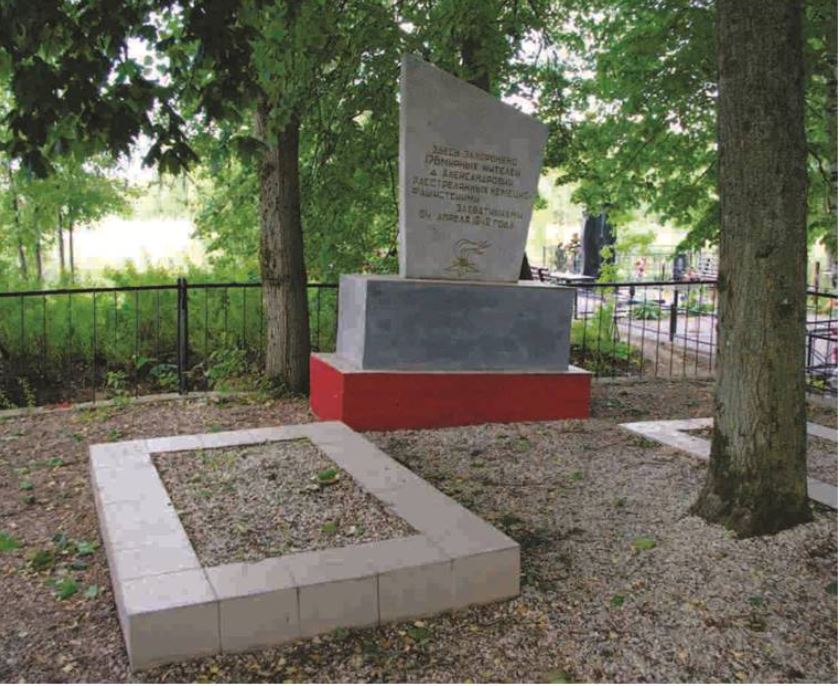
The author of the article in Prapor komunizmu reports on both Jewish and Slavic victims. In the context of what we know today about the Soviet culture of memory of the Holocaust, it is not surprising that what is said about the murder of the largest group—Jews—is extremely brief yet emotional. Without indicating the ethnic affiliation of the murdered people (which could alienate them symbolically from readers), the author appeals to universal human values, utilizing emotional images (for example, childhood and motherhood) in order to create a connection between readers and victims: “Did Havryliuk forget how with his boots he trampled the little heads of still-living children into the bloodied earth of Mykhelsonov Park on the outskirts of Chudniv? How many infants and their mothers did this savage shoot?” Despite the fact that the word “Jew” does not appear in the text, it was completely clear to readers who was being referenced here, because other mothers and their infants were not killed in the park on the outskirts of Chudniv.
The next, lengthy paragraph in the article is all the more surprising: “In the summer of 1942 Havryliuk came upon on a small gypsy camp near Chudniv. Only women and children were there at the time. He flew in like a beast, scattered the tents and, together with his fellow policemen, rounded up seven inhabitants of the camp. They knocked out teeth, beat them then tied their hands with barbed wire, threw them on a wagon, and brought them to the police station in Chudniv. Eyewitnesses state that along the way blood was dripping from the wagon. In the courtyard of the police station, the condemned were lined up against a wall and the shooting began. Does Havryliuk recall how Rudolf Falkenberg, the police chief, laughed uproariously at the stunt pulled by his subordinate, when he drew targets in chalk on the breasts of his victims? They were shooting in turn: first, the police chief; then his assistant, Friedrich Golnik; then Havryliuk. Four gypsy women and three of their children fell dead, and the executioners hid their dirty Parabellums and went off to the so-called casino to get drunk. Eyewitnesses to this abuse live in Chudniv and remember everything down to the last detail.”
To a significant degree, this description contradicts the presentation of the occupation regime to the mass reader, which was generally accepted at the time in the USSR. While Jewish victims are anonymized in it, another group—the Roma—are named openly, and the reader is not left in any doubt that they were killed, not because of their political position or attitude to the authorities, but only because of their ethnic affiliation. The article was published in a newspaper that had a circulation of nearly ten thousand, covering the entire raion with its fifty localities. Its publication contributed to what Aleida and Jan Assmann term a transition from “communicative” memory to “cultural” memory; in other words, to the process whereby knowledge about the death of the Roma passed from the sphere of the oral accounts of several witnesses (after whose death this memory would die away naturally) to the sphere of documentation in writing and thus an element of the general narrative about the past canonized by a Soviet newspaper.
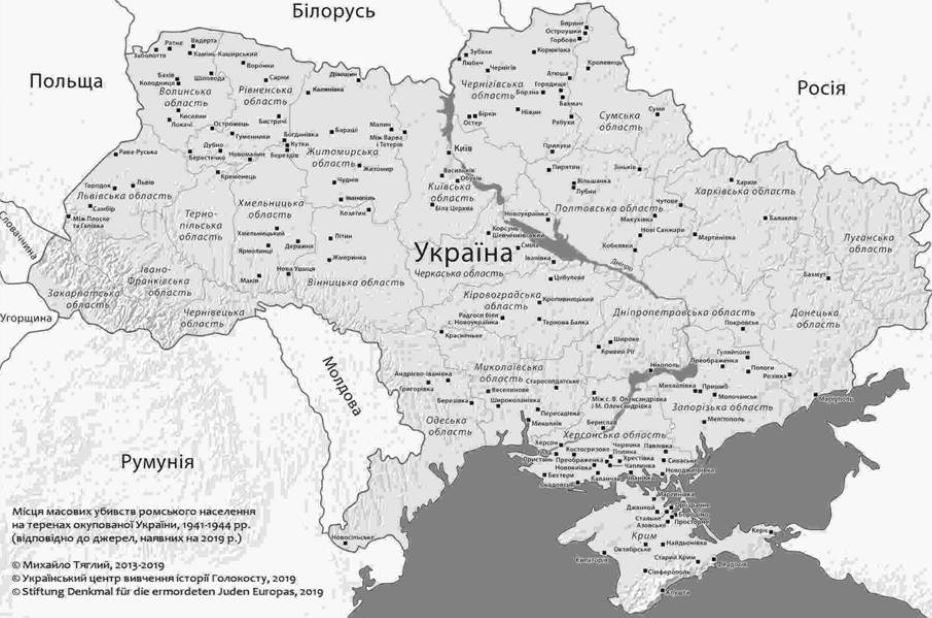
The article “Punishment will catch up with the executioner” gives rise to a number of questions. How extensive (or, on the contrary, how rare and exceptional) was this method of informing Soviet readers about the atrocities that the Nazi occupation regime perpetrated against the Roma? Is this kind of article representative of the general corpus of the tens and hundreds of thousand articles written about the Nazi occupation period? Based on this example, can we say that knowledge about the genocide of the Roma was part of the Soviet canon of memory about the Second World War? If so, then what place did Soviet postwar mythology about the war assign to Roma victims in the gamut of affected groups, the memory of which it was immortalizing? And what explanation of the fact that the Roma were the object of persecution and destruction as a group as a whole did it propose (if indeed it proposed) to the mass Soviet readership? Did this explanation remain unchanged during the postwar decades, or did it undergo a transformation?
Although they were few in number but still present in the Soviet narrative about the war, the ways of reflecting the tragedy of the Roma overwhelmingly distracted the mass audience from reaching a conclusion about the genocidal, racial, and ideological nature of the Nazi policy toward this group. Instead, they formed, albeit inadvertently, the widespread notion that the Nazis persecuted the Roma because of their supposed collective “asocial” character. This in the end contributed at least to the partial shifting of blame for their persecution onto the victims themselves. Such notions in the collective memory of the Soviet audience were preserved until the collapse of the USSR and were inherited by the mass consciousness of the population of independent Ukraine, being one of the sources of the current negative attitude to the Roma minority in contemporary society. [3] One may suppose that, regardless of the specific features of the formation of memory of the war in various Central-East European countries, the patterns described below are characteristic of them.
This article examines the diverse channels and instruments that were used about the Second World War (especially the period of 1941–1945, which became known in the USSR as the “Great Patriotic War). Besides periodical publications, one should also include here the creative sphere—literary works, theater productions, and cinematography—and monumental culture, which utilized a wide range of figurative and symbolic means, ranging from monuments erected in places where victims died to large-scale memorial complexes and a system of rituals featuring ceremonial and symbolic acts, etc. This was everything that the state system used for conducting educational work with the citizens of the country, for the purpose of cultivating a myth about the Great Patriotic War [4]—a myth that, according to the observations of Amir Weiner [5] and other historians, was intended to ensure the legitimacy of the Soviet political regime and which during a certain period became the cornerstone of an ideology that gave meaning to the existence of the Soviet state. This was a large-scale goal, and it is highly unlikely that a single study will do it justice.
The goal of this research is to undertake a critical review of the conclusions present in historiography regarding Soviet citizens’ awareness and perceptions of the tragic fate of the Roma by examining sources that were never previously studied and analyzing the image of Roma that they concealed from the Soviet audience. These sources include all discovered mentions of Roma during the occupation years, which appeared in the public space both during the war and the postwar period. Among them are unpublished documents of the Extraordinary State Commission for the establishment and investigation of the atrocities of the German fascist invaders (NDK) and some of the commission’s documents that were published. These are materials of investigations and trials of those who were accused in the USSR of “aiding the occupiers” and those kernels of information from them which were made public by the government; central-, regional-, and raion-level newspapers; numerous recollections and memoirs written by former members of the underground and partisan movements who encountered the Roma population; and creative works, both literary and cinematographic, in which the Soviet audience also came across mentions of what the Roma had experienced.
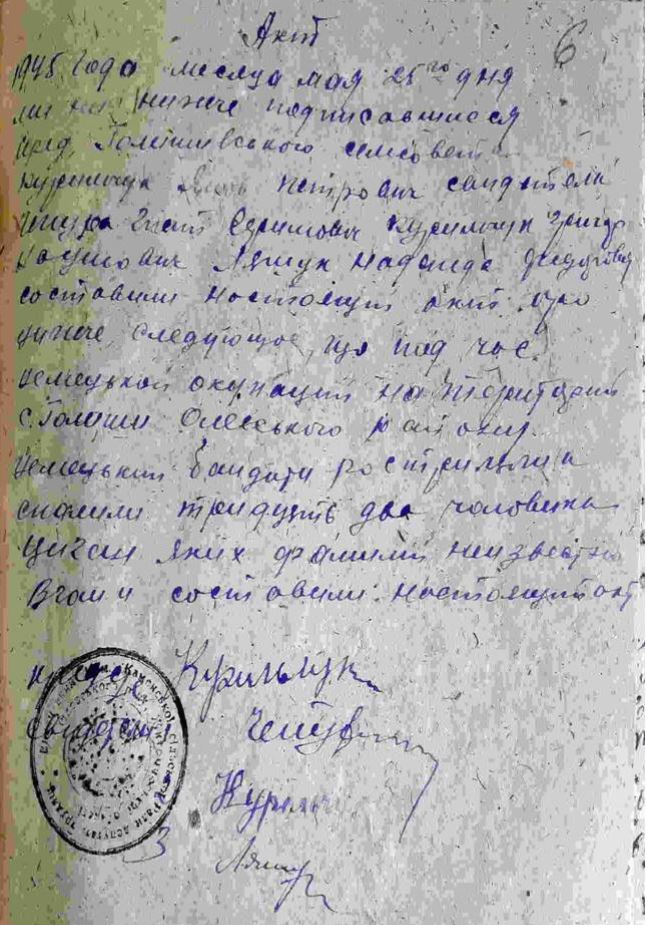
The chronological framework of this study encompasses the period from 1941 (when government bodies had already begun receiving reports about crimes in the occupied territory and publishing them) to the mid-1980s (as long as the memory of the war, strictly defined by the state ideology, dominated the civic space, after which it began to change rapidly as a result of the liberalization of the social climate and the political system). The analysis focuses on processes connected with the memory of the Roma genocide in the Ukrainian Soviet Socialist Republic. Thus, mostly Ukrainian sources are analyzed. However, it should be understood that, even though the situation in the Ukrainian SSR may have had its own specific features, these processes emanated from the capital of the Soviet Union, and the formation of the memory of the war in Ukraine was an element of the All-Union picture. Finally, non-Ukrainian materials are also used in this study.
It is important to emphasize that we are dealing not with what the Roma experienced in historical reality [6], but with the recording and reflection of this experience in informational reports or creative works. In other words, what is important in this study is not so much historical facts as their representation, which, in emerging into the public space, formed the Soviet audience’s popular notions. Of course, where historical sources are available, we did not overlook the opportunity to compare the extent to which the presentation offered to the audience differed from the existing picture, as known from sources. However, that is a topic for a different study. In this case, our task lies rather in describing and systematizing the images of Roma victims as presented to the Soviet audience and in establishing the connection between them and the way they had an impact on the culture of memory of the Roma genocide in Soviet society.
In recent years research on the place of the Roma genocide in Soviet postwar culture has intensified. The first work was done by the German researcher Martin Holler, who analyzed the formation of the memory about the Roma genocide based on cinematographic productions and the activities of the Romen Theater in Moscow. [7] Another step forward in research efforts is represented by the articles by the Swedish researcher Andrej Kotljarchuk, who added several works of fiction that were not examined by Holler, as well as central Soviet periodicals during the period marked by the end of the war and the postwar years [8], аnd offered a comparative analysis of the trajectory of collective memory of the Roma genocide in post-Soviet Belarus, Ukraine, and Russia. [9] The ethnologist Volha Bartash’s study of the possibility of using ethnographic and oral-history research methods for analyzing the memory of the genocide within the Roma milieu is highly informative. [10]
According to Martin Holler, the “National Socialist genocide against the Roma played practically no role in the official Soviet memory policy....Although the destruction of the Jews and ‘gypsies’ as such was not in doubt, the qualitative features of the genocides were dismissed or relativized.” [11] As Kotljarchuk has noted, “information in the Soviet media about the Nazi destruction of the Roma was minimal... However, in some wartime publications, Soviet media emphasized that the destruction of the Roma by the Nazis was motivated exclusively by racial goals.” [12] Studies demonstrate that the memory of the fate of the Roma had a chance to be presented openly in the mass media in the last years of the war and the first postwar years. This was a short-lived period, when the Soviet ideologeme about the Great Patriotic War had still not been developed in a rigid form, thus allowing information about the ethnic affiliation of the groups of victims who were doomed to be destroyed completely to trickle infrequently into the central press.
At the same, it should be noted that the availability of information on the tragic fate of the Roma in the public space of the postwar Soviet Union did not necessarily contribute to the preservation of the memory of this phenomenon (as it follows by default from studies already available in historiography). Our starting-point is a widely accepted notion from the field of Social Psychology, which states that society is able and prefers to remember the bitter fate of a minority only when it compares itself to this minority to some extent if not identifies with it; perceives certain common traits between one and the other; and seeks and finds in the other its own “reflection,” and in its collective fate—lessons for its own life and security. For this, cultural sociology uses the concept of “collective trauma”: If victims are presented within the framework of value parameters that are shared by a society’s collective identity, then only the latter will be able to connect with empathy for trauma on the symbolic level. [13] Therefore, what is important is how Roma victims appeared in invocations to the consumer of information in the pages of articles or movie or television screens. Were they presented as part of “our own” society, the loss of which should spark sympathy and a desire to immortalize its tragedy? How were the reasons why the Roma experienced persecution and killings explained to readers and viewers?
Knowledge for “internal use,” or the “underwater portion of the iceberg”: The recording of occupation realities and NDK documents
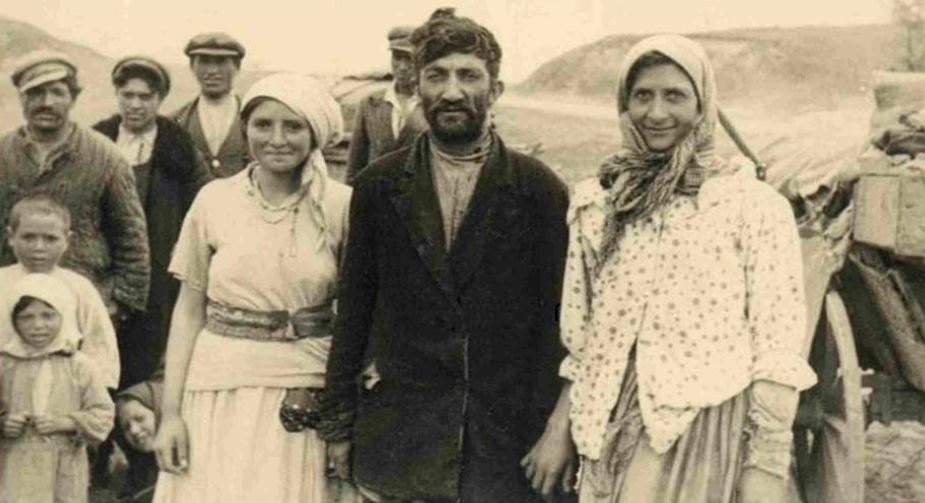
To date, some types of once-secret Soviet documents have attracted scholars’ attention. First and foremost, this is the documentation of the Extraordinary State Commission for the establishment and investigation of the atrocities of the German fascist invaders and their accomplices. The basic patterns of highlighting the sufferings of Roma victims were first analyzed by Martin Holler. Contrary to the widespread conviction that the ethnic affiliation of victims was eliminated from the NDK’s documents and replaced by the general expression “peaceful Soviet citizens,” Holler’s research will spur one to examine these documents in a more nuanced fashion. From his work, it follows that at the initial stage of the NDK’s work (that is, during the collection of eyewitness testimonies), the ethnic affiliation of victims figures clearly in these documents, and on the basis of the eyewitness testimonies, it is entirely possible to establish the Roma identity of those who were killed. However, when branches of the NDK were formulating reports on the basis of eyewitness testimonies, ethnic affiliation was often masked. Here it must be noted that, as demonstrated by numerous studies, the compilers of the documents did the same with the ethnicity of Jewish victims. [14]
No matter what the reasons that led to this masking, here we are interested in a different problem, which consists of two components. The first is: In what form do the Roma appear in those few NDK reports (out of 56,000) in which they are mentioned? How detailed are the descriptions of the circumstances, the dates, and the places of their persecution and destruction? And, more important, how do NDK documents reflect their group social and cultural profile? Is their portrait marked by expressiveness and clarity?
To date, we know about the existence of approximately 140 Roma mass killing sites in contemporary Ukraine. [15] In some of them, only the Roma population was killed, whereas in others Roma were one of several groups, including Jews, Soviet POWs, Soviet activists, underground members, and anyone whom the occupiers deemed “undesirable elements.” NDK documents contain information on only roughly 60 of these 140 places where Roma died (we know about the rest from other types of sources. [16]
But it is not just quantitative indicators that matter here. Even in those cases where Roma are mentioned as victims, the information about them is often limited to one or two sentences (that is, only the mention of the fact of murder), without indicating the place, date, number of murdered people, the circumstances surrounding their death, the perpetrators of the crime, etc.). At least one of these facts is present less often; two or more—rarely. Cases where you can find a detailed description of an event are uncommon.
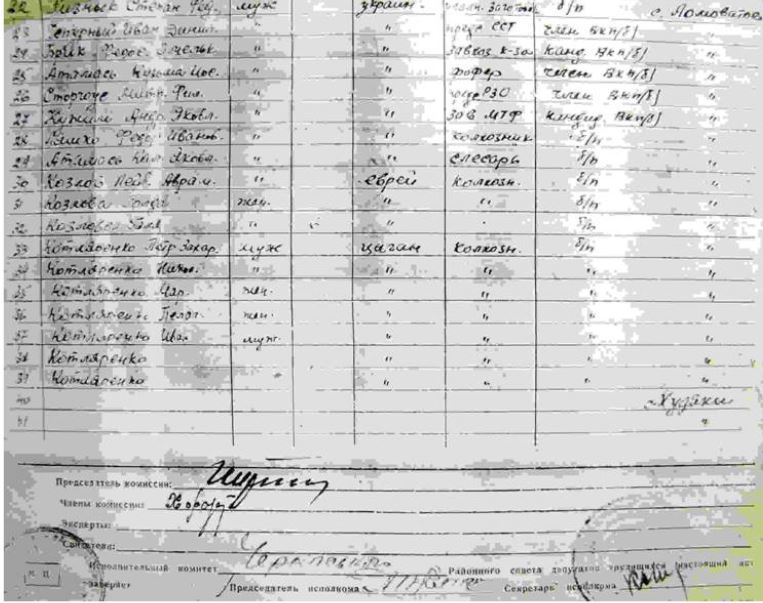
The most important thing is how Roma victims appear in these documents in those infrequent cases where their death was already documented. Summing up the methods with which NDK staffers dealt with this issue, it is worth noting the following pattern: In the majority of cases, theу boil down to descriptions of reprisals against Roma who were unknown to the local population; in other words, itinerant people who were an “alien,” extraneous element of the customary landscape and the values of established communities. A typical example of this crime as revealed in the documents looks roughly like this: ...also, a gypsy camp in the forest was captured and shot by the German occupiers of such-and-such populated area. [17]
Here is a typical example (a report drawn up on 25 May 1945 in the village of Holyshi, Olevsk raion, Zhytomyr oblast): “We, the undersigned, chair[man] of the Holyshi village soviet Yakiv Petrovych Kurylchuk, the witnesses Hnat Efymovych Chepura, Hryhorii Naumovych Kurylchuk, [and] Fedorivna Liashuk, have drawn up this record about the following; that during the German occupation of the territory of the village of Holyshi, Olevsk raion, German bandits shot and burned thirty-two gypsies, whose surnames are not known. Concerning which we have drawn up this act.” [18]
Of course, in those cases where the occupiers actually captured and killed an encampment of itinerant Roma near a populated area, the NDK simply had no possibility to uncover detailed information about the number of victims and their names because they were not known to the local population (on which basis the NDK was collecting information). However, this does not explain why witnesses often did not provide (or the NDK simply did not record them) the dates and places of executions. This may be explained by the circumstance that the murdered itinerant Roma were not known—not simply literally—to the local population and thus to the staff members of local NDK branches. They were an unfamiliar and “alien” element in the significantly broader sense, that is, the sporadic presence of Roma in their space and their eventual disappearance from it did not elicit in the witnesses a sense of loss that had to be accurately recorded.
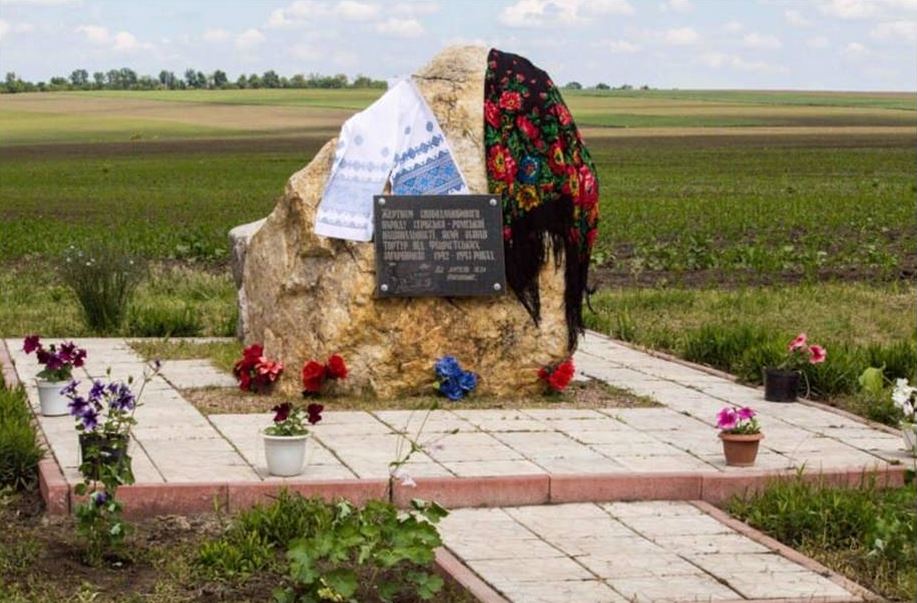
However, even in places where murdered Roma were not nomadic but had adopted a settled lifestyle and thus were an integral component of the local economic and cultural landscape, NDK documents are also frequently limited to a description of their fate consisting of one or two sentences. A mention of Roma victims was often a short addendum to detailed descriptions of the death of Soviet POWs, Communist Party and Soviet activists, members of the Soviet underground, and, occasionally, the Jewish population. Below I cite examples of cities where substantial Roma communities lived prior to the German invasion: “In the spring of 1942 a registration of the gypsy population was conducted, and after the registration, all the gypsies were shot”—this is all that is noted in an NDK report about Chernihiv, a city where, according to various estimates, between a thousand and roughly two thousand Roma were killed. [19] In the city of Mariupol, following a detailed description of a reprisal against local Jews, the following is noted: “The same fate befell the city’s gypsy population.” [20] Similarly, albeit in a somewhat more detailed fashion, an NDK report recounts what happened to the Roma living in the city of Kherson: “The same terrible fate [like that of the Jews—Author] befell all the Roma who were living in the vicinity of the city of Kherson. At first, the Germans announced to the gypsies that they were assembling them for dispatching to their fatherland, to Romania. Once approximately 300 gypsies had gathered, they were shot near the city jail and dumped into a pit in the vicinity of the ramparts.” [21] In Yevpatoria, where approximately a thousand Roma were killed, the NDK’s final report mentions only that “by means of mass shootings, the entire population of [...] gypsies was destroyed.” [22] The NDK’s final report on Zhytomyr also mentions that “from the first days of the capture of the city and its environs, Jews and gypsies were caught on streets and held in torture chambers.” This is followed by detailed information about the total number of Jews who were killed in Zhytomyr, after which it is noted that “the same fate was experienced by Soviet citizens of other nationalities, particularly gypsies and Ukrainians.” [23]
Furthermore, in some cases, the NKD failed to include information collected from witnesses about the killing of Roma in final reports about population losses. This is what happened in the Crimean cities of Simferopol (where over eight hundred Roma were killed) and Kerch (several dozen victims), and in Kyiv (where the killings of Roma in Babyn Yar were mentioned by at least one witness. [24] However, they were not included in the final report). Information about Roma victims is also missing from the NDK’s final report on Chudniv, a raion center in Zhytomyr oblast (which documents in detail the death of local Jews). [25] An exception to this rule may be found only in reports from three places where the killing of the Roma is described in greater detail. This concerns Melitopol [26] as well as some lightly populated areas in a rural locale in southern Ukraine (Kherson oblast) and in the steppe part of the Crimea, where, as a result of the Soviet government’s “stimulation” of the Roma’s transition to a “settled, productive lifestyle,” which was implemented in the 1920s and 1930s, Roma collective farmers comprised a significant proportion of the local population.
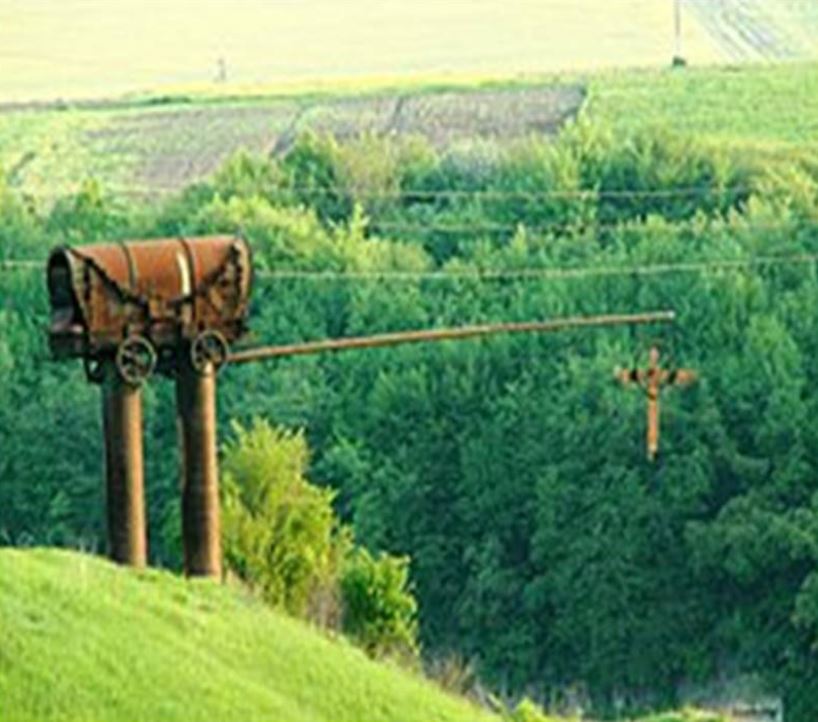
The French researcher Nathalie Moine has written that, as regards the question “concerning the documentation of the Roma question, the work [of the NDK—Author] was ineffectual.” [27] What explains this method of documenting the fate of the Roma? There are several reasons. First, there was the fleeting nature of the work and the limited resources of local branches of the NDK. Within a short period of time the latter had to carry out an immense amount of work to establish and tally both the number of people who were killed and deported to Germany during the occupation and economic losses.
Second, there was a relatively small number of Roma victims compared to other categories of the population. Against the background of the substantial numbers of victims from among the Jewish and Slavic populations (the latter were frequently killed in areas where the occupiers resorted to “reprisals” for their real or fictitious support of the Soviet partisan movement), as well as against the background of arbitrary reprisals against anyone who was suspected of resisting the occupation regime, the Roma might be lost and overlooked.
Third, there was also a subjective factor connected with the Roma community. Where itinerant Roma are concerned, they were entirely unfamiliar to the local population and the members of the commission. If the victims were local Roma then, being as a rule craftsmen, handymen, service workers, farmhands, and peasants, they occupied the lower rungs of the social hierarchy. As a result, they were inconspicuous in the sociopolitical and cultural reality of the prewar period, and therefore their disappearance did not become egregiously noticeable to the local society. [28] The following fact is direct confirmation of this supposition: Whereas, after a description of the death of party or Soviet functionaries or members of the Jewish population, the NDK reports frequently cite examples of the fate that befell the most visible or socially significant victims, in those cases where Roma are mentioned you will not encounter a single surname or a single mention of a specific person that would illustrate the fate of this group.
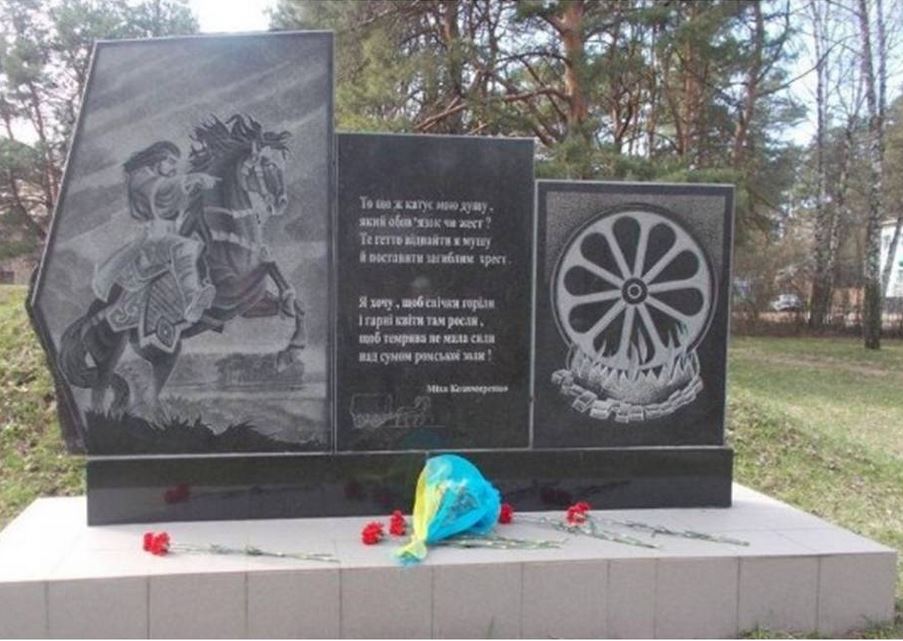
Fourth, Roma who survived the occupation were almost never involved in providing testimonies about Nazi crimes (perhaps they were not given the opportunity to do so). [29] In 2015–2019 a large-scale online educational project called RomArchive was carried out, one of whose sections is entitled “Voices of the Victims.” Its task lay in collecting and presenting the testimonies of Roma from Ukraine and other countries who survived the genocide, which date to the wartime period and the first postwar years. During the search process it became clear that the testimonies collected by the commission could be counted on the fingers of one hand. [30]
Fifth, the existence and work of the NDK were subordinated to domestic and foreign policy tasks. They gave rise to discursive practices that were used by members of the NDK during the drafting of final reports. In the foreign policy dimension, the task lay in the preparation of a corpus of claims and an evidentiary basis for a postwar tribunal of Nazi Germany for the purpose of obtaining reparations. The goal of the domestic policy task was the further use of NDK documents to inform—and, at the same time, to educate—the Soviet audience about the scale of human losses and material damage caused by the war. Both the foreign- and domestic-policy tasks determined the need to present atrocities and genocidal practices as ones that were aimed not so much at a specific group (or groups as such) as at the entire population of the USSR, regardless of ethnic affiliation.
Whereas murdered Jews had at least a small chance of becoming victims of the ideologically motivated desire to destroy a people according to ethnic criteria, the fate of the Roma (partly as a result of the fact that some Roma victims were truly nomadic, partly owing to the Extraordinary State Commission’s inattention to this people) was mostly portrayed as being the result of the occupiers’ policy, which was based on “social” criteria and intended to eliminate from society supposedly “asocial,” “useless,” and “alien” elements.
In the collective perception of Soviet society (which, like any other society, was not free of superstitions and stereotypes about “gypsies” even before the German invasion), this method of documenting the Roma tragedy could only reinforce the notion that the Germans, who were advocates of productive labor and strict discipline, sought to restore order. And they did not like “gypsies” precisely because they supposedly “did not want to work.” One can even assume that the work done by the direct executors of the NDK on the local level during the documenting of Roma victims could also have been conditioned to a certain degree by this attitude to Roma. This may be the sixth reason why information about Roma victims is so scarce in NDK documents.
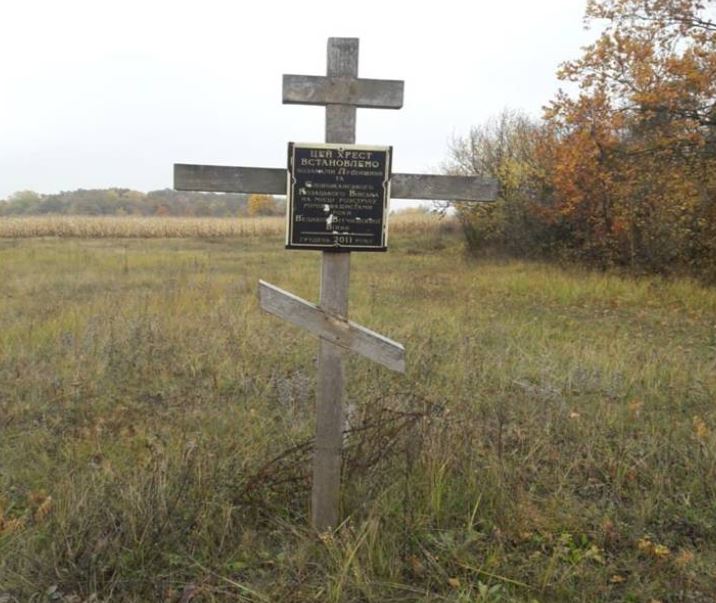
The extent to which information about the Roma has long remained overlooked or deemed unwarranted by historians is illustrated by the first source studies on the Roma. The authors of these studies described the ideological foundations and organizational features of the NDK’s work, the methods of presenting Jewish victims, Soviet POWs, Ostarbeiter [forced labor] deported to Germany, etc. However, the Roma, as a special group, did not attract the attention of researchers. [31] It must be noted that it was practically impossible not to notice this group of victims in NKD documentation. For example, the Danish researcher Niels Bo-Poulsen observed that “when internal Soviet materials were focused on the fate of individual groups of victims, they consistently indicated Jews, gypsies, people with mental and physical illnesses.” [32]
When the war ended, the Soviet government needed to create its history. The most diverse materials served as “raw materials” for the narrative about living conditions during the occupation. Of course, the NDK’s materials are not the only source for this. However, they formed a certain field, tonality, set of topics, and viewpoint for creating additional mass media products about the war, the occupation, and damages and losses during this period.
Special to Ukraїna Moderna. Published here for the first time. Reproducing the text (partially or in its entirety) requires permission from the author or the editorial office of the Ukraїna Moderna Web site. ©Mykhail Tyaglyy.
All illustrations supplied by the author.
This article was supported by a research stipend awarded by Imre Kertész Kolleg Jena. The author is grateful to the team and fellow stipend-holders at Imre Kertész Kolleg Jena for their fruitful discussions and valuable advice.
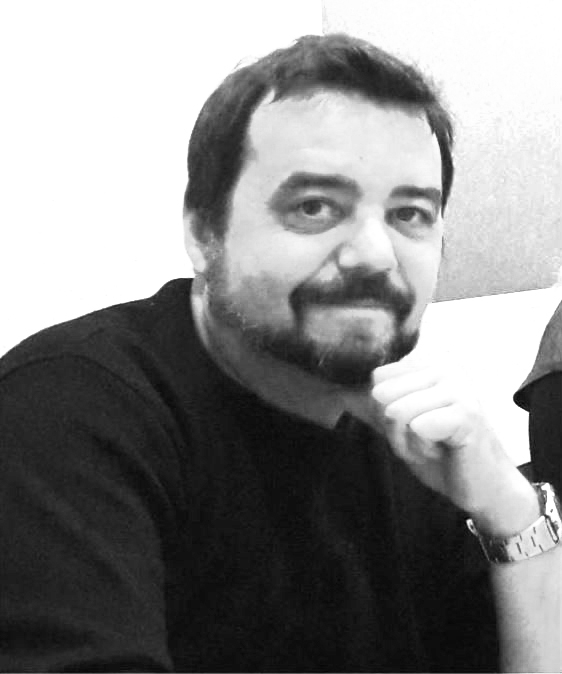 Mykhail Tyaglyy is a scholarly associate of the Ukrainian Center for Holocaust Studies (Kyiv), managing editor of the scholarly journal Holokost і suchasnist. Studiї v Ukraїni і sviti (Holocaust and Modernity: Studies in Ukraine and the World). His academic interests include the history of the Holocaust, the Roma genocide, studies of the memory of genocide victims, and the specific character of teaching the history of the Holocaust and other genocides. He is the author of a number of works about the Holocaust in the Crimea, the course and consequences of the Nazis’ anti-Roma policy in Ukraine; the compiler of a collection of documents and curator of an educational history exhibit devoted to these questions; and the scholarly editor of Ukrainian translations of studies in Holocaust history.
Mykhail Tyaglyy is a scholarly associate of the Ukrainian Center for Holocaust Studies (Kyiv), managing editor of the scholarly journal Holokost і suchasnist. Studiї v Ukraїni і sviti (Holocaust and Modernity: Studies in Ukraine and the World). His academic interests include the history of the Holocaust, the Roma genocide, studies of the memory of genocide victims, and the specific character of teaching the history of the Holocaust and other genocides. He is the author of a number of works about the Holocaust in the Crimea, the course and consequences of the Nazis’ anti-Roma policy in Ukraine; the compiler of a collection of documents and curator of an educational history exhibit devoted to these questions; and the scholarly editor of Ukrainian translations of studies in Holocaust history.
[2] Encyclopedia of Camps and Ghettos, 1933–1945, vol. 2, pt. B, s. v. “Chudnov”; A. Kruglov and A. Umanskii, Kholokost v Ukraine: Reikhskomissariat “Ukraina,” Gubernatorstvo “Transnistriia” (Dnipro: Ukraїns′kyi instytut vyvchennia Holokosta “Tkuma,” 2016), 178, 191, 194.
[3] According to data collected by the Kyiv International Institute of Sociology, this survey, using the Bogardus Social Distance Scale, revealed that in recent years the Ukrainian population has shown the highest level of prejudice toward Roma. The latest data are for September 2019.
[4] The cult of the “Great Patriotic War,” which was cultivated intensively in the USSR starting in the mid-1960s, was designed to boost the legitimacy of the Communist Party and to give meaning to Soviet history in the eyes of the population. For classic studies describing this process, see N. Tumarkin, The Living and the Dead: The Rise and Fall of the Cult of World War II in Russia (New York: Basic Books, 1994); A. Weiner, Making Sense of War: The Second World War and the Fate of the Bolshevik Revolution (Princeton: Princeton University Press, 2001).
[5] Weiner, Making Sense of War, 416.
[6] This question is examined in detail in Mykhail Tyaglyy, “Okupatsiina polityka ta dolia romiv Ukraїny,” in Ukraїna v Druhii svitovii viini: Pohliad z ХХІ stolittia, bk. 2 (Kyiv: Naukova dumka, 2011), 864–97.
[7] M. Holler, “Die nationalsozialistische Vernichtung der Roma in der sowjetischen und russischen Erinnerungskultur,” in Der nationalsozialistische Genozid an den Roma Osteuropas: Geschichte und künstlerische Verarbeitung, ed. Felicitas Fischer von Weikersthal, Christoph Garstka, et al. (Cologne, 2008), 245–94.
[8] Andrej Kotljarchuk, “Invisible Victims: The Cold War and Representation of the Roma Genocide in Soviet Feature Films, Teleplays and Theater Performances,” in Russische und Sowjetische Geschichte im Film: Von Väterchen Zar, tragischen Helden, russischen Revolutionären und “kalten Kriegern,” ed. Alexander Friedman and Frank Jacob (New York: ALTIJA, 2016), 129–50.
[9] Andrej Kotljarchuk, “The Memory of the Roma Holocaust in Ukraine: Mass Graves, Memory Work and the Politics of Commemoration,” in Disputed Memories: Emotions and Memory Politics in Central, Eastern and South–Eastern Europe, ed. Tea Sindbæk Andersen and Barbara Tornqvist-Plewa (Berlin and Boston: Walter de Gruyter, 2016), 149–76; idem, “World War II Memory Politics: Jewish, Polish and Roma Minorities of Belarus,” The Journal of Belarusian Studies 7, no. 1 (2013): 7–40; idem, “Natsistskii genotsid tsygan: Sovetskaia i postsovetskaia politika pamiati v sravnitel′noi perspektive” (paper, Nazi Genocide of Roma and Jews in Eastern Europe, International Forum. Museum of Jewish Heritage and Holocaust, Moscow, February 2014).
[10] Volha Bartash, “Towards Ethnography of Archival Silence: Romani Memory of Nazi Genocide Confronts the Soviet Records,” La Ricerca Folklorica 2, 2019: 13–28.
[11] Holler, “Die nationalsozialistische Vernichtung der Roma,” 245.
[12] Kotljarchuk, “Memory of Roma Holocaust in Ukraine,” 153.
[13] “Only if the victims are represented in terms of valued qualities shared by the larger collective identity will the audience be able to symbolically participate in the experience of the originating trauma” (J. C. Alexander, The Meanings of Social Life: A Cultural Sociology [New York: Oxford University Press, 2005], 96).
[14] See, e.g., Thomas Earl Porter, “’Nikto ne zabyt’: The Politicization of Soviet War Dead,” in Stalin’s Soviet Justice: “Show” Trials, War Crimes Trials, and Nuremberg, ed. David M. Crowe (Bloomsbury Academic, 2019), 105–26; Elana Jakel, “Ukraine without Jews”? Nationality and Belonging in Soviet Ukraine, 1943–1948” (doctoral thesis, University of Illinois at Urbana-Champaign, 2014), 161–89.
[15] Map indicating mass Roma killing sites in occupied Ukraine, according to sources available in 2019.
[16] This approximates the work of the Extraordinary State Commission for Belarus. According to Volha Bartash’s research on the documents of the Belarusian branch of the NDK, she succeeds in locating information on only about a third of the places where Roma were killed, about which she was told during the course of her fieldwork (Bartash, “Towards Ethnography,” 15).
[17] For published examples, see M. Tyaglyy, Peresliduvannia ta vbyvstva romiv na terenakh Ukraїny u chasy Druhoї svitovoї viiny; Zbirnyk dokumentiv, materialiv ta spohadiv (Kyiv, 2013), 55–59.
[18] State Archive of Zhytomyr oblast (Derzhavnyi arkhiv Zhytomyrs′koї oblasti; hereafter DAZhO), f. 2636, op. 1, spr. 66, ark. 6.
[19] State Archive of the Russian Federation (Gosudarstvennyi arkhiv Rossiiskoi Federatsii; hereafter GARF), f. 7021, op. 78, d. 53, l. 2.
[20] GARF, f. 7021, op. 72, d. 2, l. 50.
[21] GARF, op. 77, d. 420, l. 138.
[22] State Archive of the Autonomous Republic of the Crimea (Derzhavnyi arkhiv Avtonomnoї Respubliky Krym; hereafter DAARK), f. R-1289, op. 1, spr. 5, ark. 27.
[23] GARF, f. 7021, op. 60, d. 294, l. 118.
[24] Central State Archive of the Highest Organs of Government and Administration of Ukraine (Tsentral′nyi derzhavnyi arkhiv vyshchykh orhaniv vlady ta upravlinnia Ukraїny; hereafter TsDAVOV Ukraїny, f. 4620, op. 3, spr. 243а, ark. 13–15.
[25] GARF, f. 7021, оp. 60, d. 315, l. 3–5.
[26] GARF, f. 7021, оp. 61, d. 17, l. 40v.
[27] N. Moine, “La commission d'enquête soviétique sur les crimes de guerre nazis: entre reconquête du territoire, écriture du récit de la guerre et usages justiciers,” Le Mouvement Social 222, no. 1 (2008): 81–109.
[28] See Pervichnye materialy perepisi naselenia SSSR 1939 g. Raspredelenie naseleniia po zaniatiiam i natsional′nosti, Russian State Archive of the Economy (Rossiiskii gosudarstvennyi arkhiv ekonomiki, hereafter RGAE), f. 1562, op. 336, vol. 1, d. 1158–59.
[29] See, e.g., Bartash, “Towards Ethnography,” 15–17.
[30] The situation in other republics of the USSR—independent states today—was fundamentally the same. No testimonies for Belarus were presented.
[31] With the exception of Holler’s work. See M. R. Sanders, “Extraordinary Crimes in Ukraine: An Examination of Evidence Collection by the Extraordinary State Commission of the U.S.S.R., 1942–1946” (PhD dissertation, Ohio University, 1995); M. Sorokina, “People and Procedures: Toward a History of the Investigation of Nazi Crimes in the USSR,” Kritika: Explorations in Russian and Eurasian History 6, no. 4 (2005): 797–831; K. Feferman, “Soviet Investigation of Nazi Crimes in the USSR: Documenting the Holocaust,” Journal of Genocide Research 5, no. 4 (2003): 587–602; J. Garrard, “The Nazi Holocaust in the Soviet Union: Interpreting Newly Opened Russian Archives,” East European Jewish Review 25, no. 2 (1995): 4–30.
[32] N. B. Poulsen, “War Crime Investigation po-sovetski? The Extraordinary State Commission and the Stalinist System of Investigating Nazi Crimes” (PhD dissertation, University of Copenhagen, 2005), 129.
The accuracy of the facts and quotations cited in this article is the sole responsibility of the authors of the texts.
Originally appeared in Ukrainian @Ukraina Moderna
Translated from the Ukrainian by Marta D. Olynyk.
Edited by Peter Bejger.
NOTE: UJE does not necessarily endorse opinions expressed in articles and other materials published on its website and social media pages. Such materials are posted to promote discussion related to Ukrainian-Jewish interactions and relations. The website and social media pages will be places of information that reflect varied viewpoints.







